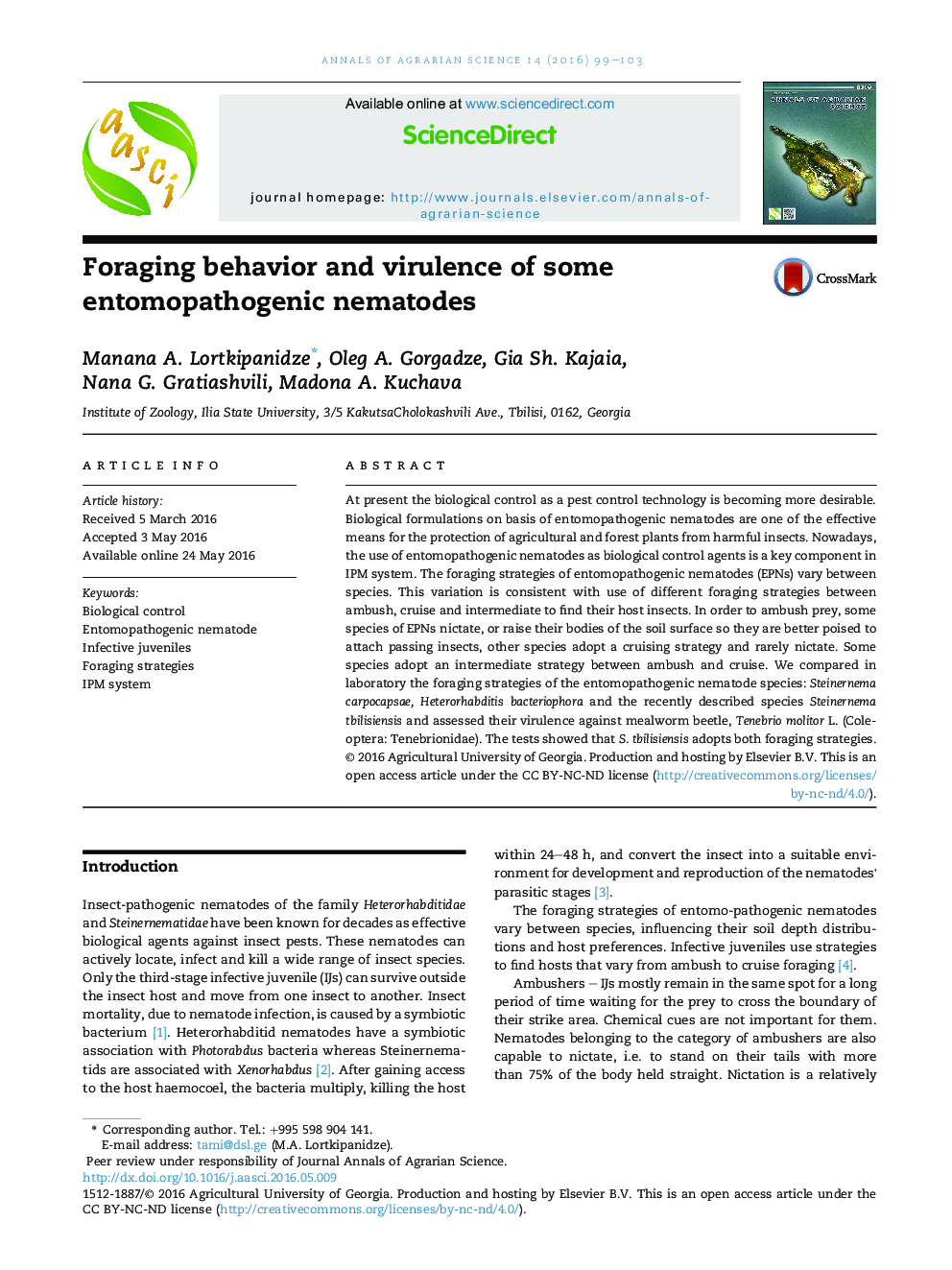| Article ID | Journal | Published Year | Pages | File Type |
|---|---|---|---|---|
| 866138 | Annals of Agrarian Science | 2016 | 5 Pages |
At present the biological control as a pest control technology is becoming more desirable. Biological formulations on basis of entomopathogenic nematodes are one of the effective means for the protection of agricultural and forest plants from harmful insects. Nowadays, the use of entomopathogenic nematodes as biological control agents is a key component in IPM system. The foraging strategies of entomopathogenic nematodes (EPNs) vary between species. This variation is consistent with use of different foraging strategies between ambush, cruise and intermediate to find their host insects. In order to ambush prey, some species of EPNs nictate, or raise their bodies of the soil surface so they are better poised to attach passing insects, other species adopt a cruising strategy and rarely nictate. Some species adopt an intermediate strategy between ambush and cruise. We compared in laboratory the foraging strategies of the entomopathogenic nematode species: Steinernema carpocapsae, Heterorhabditis bacteriophora and the recently described species Steinernema tbilisiensis and assessed their virulence against mealworm beetle, Tenebrio molitor L. (Coleoptera: Tenebrionidae). The tests showed that S. tbilisiensis adopts both foraging strategies.
